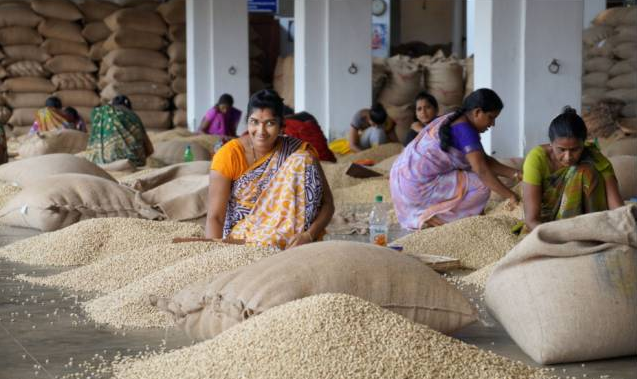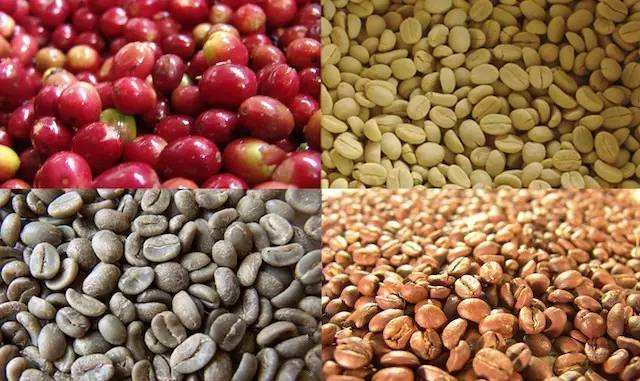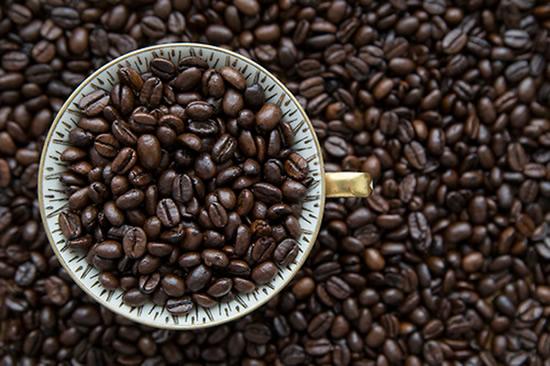Indian coffee bean season wind soaking method
The "monsoon coffee" we are talking about today comes from India, a magical country where even coffee is a bit legendary.
Legend has it that a pilgrim named Baba Budan smuggled seven coffee beans through Yemen on his way back from the pilgrimage to Mecca. In order to avoid Arab inspection, he wrapped the seven coffee seeds in cloth, hid them in the cracks in his ribs, and brought them to his home in the mountains of southern India. Coffee has since entered Asia.

one
Origin of monsoon coffee
India was the first country in Asia to grow coffee, but it was the British who promoted the development of the coffee industry in India at that time.
In the 17th and 18th centuries, the navigation industry was underdeveloped, and it took six months for coffee beans to be transported to Europe by sailboat. The raw beans were placed on the bottom of the barn, absorbing the moisture and salty smell of the sea, and the color changed from green to yellow.
For the same reason, the flavor of coffee beans has also changed. the sour taste has disappeared, but it has unexpectedly developed a strong nutty and cereal flavor, and the mellow thickness has also become higher, which is very popular in Europe.
two
Monsoon climate
In 1869, the Suez Canal was opened, and shipping moved from the sailing age to the steamboat era, and the sailing time from India to Europe was greatly shortened. As usual, the quality of raw coffee beans is improved and the flavor is better, but Europeans who have been drinking "sea" flavor for a long time are not satisfied.
With fewer and fewer orders from Europe, exporters use the "monsoon" to deal with the coffee and recreate the flavor of the coffee in order to increase the order volume and adjust measures to local conditions.
India is a typical tropical monsoon climate, with a rainy season affected by the southwest monsoon from the Indian Ocean from June to September and a dry season from October to May by the northeast monsoon from Eurasia. The side facing the moist southwest monsoon is famous-the Malaba Coast (Malabar).
three
The step of monsoon soaking method & flavor
Adhering to the policy of "creating conditions without conditions", Indian bean merchants take advantage of the climate to pile up beans a few months in advance to accept the "baptism" of the monsoon.
Step 1: place coffee beans
Every year around June, there is a monsoon in southwestern India, where coffee beans are spread to the west of the plant, with a thick bottom ranging from 10 to 20 centimeters.
Step 2: contact with the monsoon
Open the window so that the southwest wet and salty monsoon can blow through the coffee bean table in the factory, so that all the coffee beans are exposed to the extremely high humidity air.
Step 3: flip
Turn the coffee beans every day to make them damp evenly. After a week, put the coffee beans loosely in bags and pile them up. The bags will not be full so that the monsoon can blow through the bags.
Step 4: anticorrosion
The bag is reloaded and piled once a week until the coffee beans change color and taste, usually for three to four months.
Step 5: deworming and screening
The coffee weevil is repelled by smoking. After hand-selecting coffee beans, remove those that are not affected by the "monsoon", and then bag them for export.
Flavor characteristics
The bean body is yellow, the shape is expanded by one to two times, the density and weight are reduced, the bean is soft and light, the acidity is low, and it has a strong and wild aroma.
Important Notice :
前街咖啡 FrontStreet Coffee has moved to new addredd:
FrontStreet Coffee Address: 315,Donghua East Road,GuangZhou
Tel:020 38364473
- Prev

Coffee bean semi-washing & honey treatment & pulp solarization method
Following Kaiping (official Wechat account vdailycom) found that when coffee farmers picked it at the beautiful cafe, they looked like this, not the processed and roasted coffee beans we see now. All we need is coffee seeds, so the treatment can remove the skin and flesh and leave the seeds. 1 semi-washing treatment
- Next

Introduction to the wet planing method of Indonesian coffee beans
Following Cajun (vdailycom on Wechat official account) when you find that Beautiful Cafe has opened a small shop of its own, you will immediately think of Mantenin, the tough guy in the coffee circle, characterized by low acidity, high mellow thickness, slight herbal flavor and woody flavor. Soil and water environment is an important reason that affects it, but what is more important is Indonesia's unique traditional coffee treatment method: wet planing. Wet planing
Related
- What is the meaning of lactic acid fermentation with coffee bean treatment?
- How to judge the state of foam by sound?
- How does the latte pull out the unicorn pattern? Come to get for a little trick to improve the flower pull!
- Will flower pulling affect the taste of the latte?
- Do you know the history of coffee?
- The difference between honey treatment and sun washing what is raisin honey treatment?
- What kind of milk can a novice use to make coffee foam to keep the foam longer? The correct method and skills of milking tutorial sharing
- Why do washed coffee beans taste sour? Flavor characteristics of washed Coffee
- Introduction to the skill of how to practice the size and height of water injection around the circle of hand-brewed coffee
- How do beginners practice coffee flower drawing from scratch?

